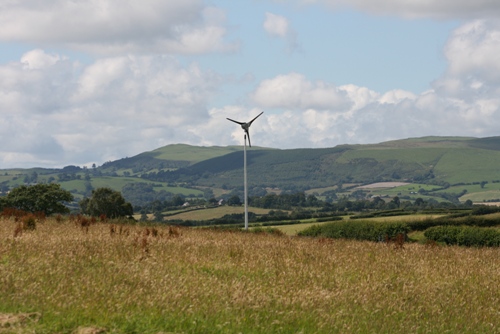Are the proposed UK feed-in tariffs high enough to stimulate investment in small-scale generation?
 This article refers to the UK proposals made in July 2009. The actual feed-in tariffs will be more generous and the new rates are discussed in a follow up article here.
This article refers to the UK proposals made in July 2009. The actual feed-in tariffs will be more generous and the new rates are discussed in a follow up article here.
After months of deliberation, the UK government has announced a range of illustrative figures for feed-in tariffs (FiTs). FiTs are fixed payments made to the owners of small generating stations for the electricity that they export to the grid. Micro-generators need high payments to justify their expensive investment in buying and installing green generation.
***
The proposed levels of FiT vary by the type of technology. The principal ones covered are biomass combustion (burning wood to generate electric power), hydro, solar photovoltaics, and wind turbines. Of these, the most appealing are likely to be wind and PV. If my estimates in the following paragraphs are correct, the government's proposal for payments for rooftop PV will yield returns of about 8% annually. The payments for rural wind are slightly higher. If the figures survive unchanged through (yet another) consultation process, they are probably high enough finally to get the microgeneration industry started.
Solar The proposal is for a FiT of 36.5 pence per kilowatt hour for a domestic rooftop system for installations carried out in financial year 2010/2011. A typical UK home installation is about '2 kilowatts peak', a figure for the maximum output in the middle of the day in mid-summer. Such an installation will generate about 1,800 kilowatt hours (kWh) a year in a sunny location in Devon or Cornwall on a south-facing roof. Typically a third of this electricity would be fed into the grid, the rest would be used in the home. The government’s documents suggest that the homeowner would receive financial benefit in three different ways:
- A payment for all generation (confusingly, this is not a conventional 'feed-in' tariff which generally refers only to electricity exported from the installation into the grid).
- A much lower payment for exports from the house to the grid.
- The money saved from generating and using electricity that would otherwise have been bought from an electricity supplier.
In the case of our 2 kilowatt peak PV system, the revenues from the proposed tariffs are approximately as follows:
2 kilowatt peak installation in the English south-west
| Annual output | 1,800 kWh |
| FiT | 36.5p per kWh |
| Total value of FiT | £657 |
| Used in the home | 1,200 kWh |
| Savings from not buying supplier electricity | 12p per kWh |
| Money saved | £144 |
| Electricity exported | 600 kWh |
| Export payment | 5p per kWh |
| Value of export payment | £30 |
| Total value from all three sources | £831 |
|---|---|
| Annual service (estimate) | £100 |
| Total return | £731 |
The cost of such an installation today would be about £10,000, meaning a running return of about 7% for the 20 years of the guaranteed life of the FiT scheme. A PV installation is likely to last 25 years or more, albeit with gradually declining output, so the installation pays back its cost with something to spare. In the north of England, the figures would be less good. PV is nice, but it isn’t a money-spinner, even with these new tariffs.
Currently, the income from a PV installation or other micro-renewable installation is not subject to tax, but the Treasury could change this.
Wind is better A 15 kW turbine at the end of a large rural garden or on a village green would cost about £50,000 (source: Proven Turbines: £41,000 for the turbine and my estimate of £9,000 for installation and grid connection). This machine would generate perhaps 25,000 kilowatt hours on a windy and exposed site with minimal turbulence created by trees. In the analysis below, this would get pumped into the grid. If some of it is used in a home, replacing grid electricity, the numbers would be slightly better.
15 kilowatt wind turbine in a good location
| Annual output | 25,000 kWh |
| FiT | 23p per kWh |
| Total value of FiT | £5,750 |
| Export payment | 5p per kWh |
| Value of export payment | £1,250 |
| Less: yearly maintenance cost (estimate) | £750 |
| Total value of installation | £6,250 |
|---|
If these estimates are correct, the return on a 15 kilowatt turbine would be over 12% p.a. A machine should last twenty years or more. It isn’t a return that would excite Goldman Sachs, but it isn’t bad. If you have a choice, go for a wind turbine, not for the more glamorous solar panels.
It is conventional wisdom in Germany and elsewhere that a near-guaranteed return of 6% is sufficient to spark interest in renewables from ordinary families. At the proposed levels for FiTs, this figure will be clearly achieved in the UK in good locations.
(This article will be part of the second edition of Chris Goodall’s How to Live a Low-Carbon Life to be published in February 2010.)